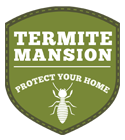The Role of Light in Termite Control DIY
The role of light in termite behavior and the design of termite control diy products such as termite monitors and termite bait stations.
There is much conflicting information written on the role of light in the behavior of subterranean termites and the subsequent design of Termite Control DIY products. From the statement that all termites are blind and cannot detect light of any form to termites have varying sensitivity to varying types of light waves with some species of termites being extremely sensitive to the light waves that humans (and other predators) see.
With the dominant form of subterranean termite control diy and professional now being the remote (from nest) consumption of a bait toxicant. The design of termite control diy aggregation devices has never been more important. To date little effort has been made by manufacturers to make these termite control diy devices light inhibiting.
Termites in general avoid light, but the subterranean species in particular exhibit a strong tendency to stay away from light.
Literature on photosensitivity of termite workers and soldiers is very scant. Active workers forage in darkness, possibly using cues other than light, such as pheromones, temperature and moisture gradients, for navigation. However their sensitive behavior of avoiding light suggests that they may possess photosensitive areas other than compound eyes or ocelli.
The foraging behavior of the Formosan termite (Family Rhinotermitidae) has been extensively studied due to the destruction it causes in the United States. However in most cases, either light intensity was not specified or not low enough to match their cryptic environment.
Most studies on the termite family Rhinotermitidae which cause over 95% of all termite damage in Australia have shown some sensitivity to the range of light that is visible to humans. Even the crudest demonstration of these termites will show increased activity away from source when exposed to strong light without atmosphere or heat changes.
Formosan termite is a subterranean species that spends most of its life underground and away from light except during swarming (reproductive release) by the adult winged stage. As such worker and soldier termites have no functional eyes. However, most laboratory studies of the food collecting behavior are conducted in some amount of light. It is important to know how sensitive different castes of the Formosan termite are to light, even at very low intensity, for design of termite control diy products.
Park and Raina, 2005, have done the most research with specific light levels and specific castes. They found that pre-soldiers and soldiers less than 2 days old who play neither a foraging nor a defensive role, showed a strong preference for darkness. However older soldiers, as primary defenders of the colony, while showing a negative phototaxis, even to 0.6 lux light (moonlight) lined up against the lighted area just as they do in any natural opening in a termite gallery. This is also true when termite infested wood or mud-tubes are broken, the soldiers immediately appear at the exposed area.
Thus, light may be acting as a factor to evoke defensive reaction in the soldiers which is vital for termite control diy.
Termite workers were found to perceive and avoid light of 0.6 lux intensity and above, with over 80% of workers not entering those areas of light and those workers that did consuming on average much less food. Pre-soldiers, a transient stage between workers and soldiers, and newly formed soldiers also showed similar response to light. However, four days old or older soldiers exhibited a positive response to light. This change is a response from worker to soldier reflecting their change in functional behaviour from food collector to colony defender.
Studies by Park and Raina, 2005, showed further behaviour after continual exposure to light that foraging would recommence after the construction of an opaque mud screen. This supports findings in the field with bait stations in the ground and attached to a dwelling often filling with a mud protection layer to block out light completely.
These studies were part of the reason that the Easy Termite Bait Pod and the TermiteMansion outer chamber were designed to prevent any light greater than 0.6 lux from entering. This results in a much greater number of workers entering and a very much greater consumption of termite bait in a shorter amount of time and therefore better termite control diy.

1 Comment. Leave new
your blog should be required reading for all pest control people who often give very misleading advice.